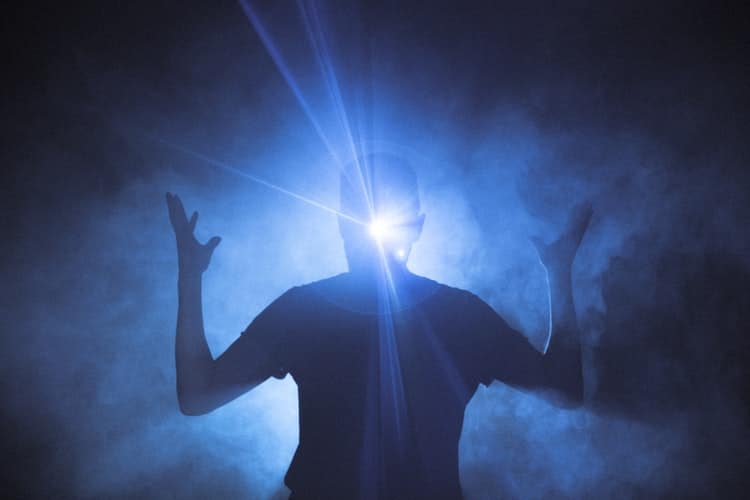This post and the photos within it may contain affiliate links. If you purchase something through the link, I may receive a commission at no extra charge to you.
The concept of lucid dreaming is not something new. The scientific community acknowledges lucid dreaming around 1968.
However, the story of this bizarre dreaming occurrence appears thousands of years ago!
In this article, we will observe ALL you need to know about lucid dreaming – from what exactly is, and the best inducing techniques, to some of the fantastic benefits and more!
The information is collected from lucid dreaming experts, lucid dreaming scientists and researchers.
We will go through:
What does “lucid dreaming” mean? Where does the term come from?
When and to who does it happen?
Is lucid dreaming means to control the dream too?
Is lucid dreaming scientifically proven?
What are the best, proven ways for beginners to induce lucid dreaming?
What are the best TECHNIQUES for lucid dreaming?
What is the feeling of having a lucid dream?
Are there some awesome stories from expert lucid dreamers?
What are the benefits of lucid dreaming?
What are the risks of lucid dreaming?
Could lucid dreaming be dangerous in a way that someone can mix up the dream world and the real world?
Can lucid dreaming cause personality changes?
Can you have intimate lucid dreams?
Can lucid dreaming be used as therapy?
Mutual dreaming while lucid dreaming – is it possible?
Are there any lucid dreaming supplements?
Sleep paralysis – should I be afraid of it?
Conclusion

1. What does “lucid dreaming” mean? Where does the term come from?
”Lucid” itself means – clear, sharp, vivid. But lucid dreaming is not just vivid dreaming.
It is the phenomenon of being completely aware that you are dreaming, while still being in the dream world.
The very first documentary evidence of lucid dreaming appears by the Ancient Greek philosopher Aristotle.
It is featured in the treatise ”On Dream”. He describes an example of self-awareness during a dream state.
The term ‘lucid dream’ was invented by Dutch author and psychiatrist Frederik van Eeden.
He published an article in 1913, called ”A Study of Dreams” where the term occurred.
Frederik Van Eeden examined his personal dreams since 1896! He collected his most interesting ones.
352 were what we know now as “lucid dreams”.
In this state of dreaming Eeden explains that
”you are completely aware of your surroundings and are able to direct your actions freely, yet the sleep is stimulating and uninterrupted”.
Lucid dreaming CAN be learned by anyone.
There might be some very rare cases, where someone can’t learn it, due to the fact that this individual is suffering from a specific health condition.

2. When and to who does it happen?
When we sleep, we go through 5 stages.
Dreaming occurs during the last stage, which is called Rapid Eye Movement (REM).
So, as a normal dream, lucid dreaming occurs during REM stage.
It can happen spontaneously or it can be triggered.
Statistically speaking:
There were 4 lucid dreaming studies, taken from a period of 50 years.
They showed that 55% of a merged sample of 24,282 people claimed to encountered a lucid dream, once or more in their lifetime.
3. Is lucid dreaming means to control the dream too?
People often confuse lucid dreaming with dream control.
However, the act of being lucid in your dreams is simply to be aware that you are dreaming.
Not always, but there are cases, where dreamers (not knowing about lucid dreaming) are having some control over the dream characters, the story, and the environment.
Lucid dreaming does not necessarily mean that you will be able to control your dream too.
Yet, you can learn to control your dreams, with time and consistency.
The level of which a person can control their dream if they are lucid varies to a high extent.
But the best part is that is when you master it, you can do literally anything you want.
After all, it is a dream! The difference is that you can shape it the way YOU want!

4. Wait a minute, is lucid dreaming scientifically proven?
Yes, it is! There are a few scientifically proven example that confirms that lucid dreaming is real.
In 1975, the British parapsychologist Dr. Keith Hearne proved it scientifically, for the first time.
He recorded a set of pre-determined eye movements from his lucid volunteer, Alan Worsley, via an electrooculogram (EOG).
Alan described how he suddenly realized he was dreaming.
Then he consciously made the signals before continuing the lucid dream experience. They were the first ever signals communicated from within a lucid dream.

Dr. Keith Hearne explains:
“It was an amazing, mind-boggling, situation. I was looking at a communication from a person in another room who was asleep, ‘unconscious’, dreaming.
Yet in his own vivid world in which he was perfectly conscious and interacting with others.
It was his reality – I was in my reality. A channel of communication had been established between those two realities.”
This exceptional record of lucid dreaming is now on constant exposure in the London Science Museum.
Afterward, in 2009, another study was carried at the Neurological Laboratory in Frankfurt.
The research was directed by Dr. Ursula Voss.
Typical dreams take place in the Theta range (4-7 Hz), whereas the waking consciousness is in the Beta range (16-31 Hz).
During lucid dreams, the identified brainwaves were the range of 40 Hz Gamma range!
Lucid dreams enable us to tap into even higher states of consciousness than waking reality.
This is h-u-g-e!
In total, six lucid dreamers were used to generate the data, over five nights each, done in a thumping tube of an MRI machine.
Another extraordinary discovery was that increased activity in the frontal and frontolateral areas of the brain.
It was considered as other higher mental function, associated with higher awareness.

In 2012, scientists reported more results from an objective experiment.
The study measured lucid dreams using FMRI scanners. fMRIs measure the rate of the blood flow, to different areas of the brain.
In that way, they can relay information through a series of images of the brain, about a person’s thoughts and actions.
The scientists asked participants to clench their fists while they were awake. This action lit up key areas of the brain on the fMRI scanner.
Afterward, participants were asked to fall asleep and dream about clenching their fists.
When they fall asleep they did it. The results were:
Similar regions of the brain lit up in both cases.
Lastly, in 2014, a remarkable study out of Frankfurt University reported a surprising discovery.
Lucid dreams can be induced with “zaps” of safe and harmless electrical stimulation of the brain.
In the research, non-lucid dreamers were given 30-second jolts of electrical current to the frontal cortex while asleep.
The result was that they had spontaneously vivid dreams, where they completely realized that they were dreaming.
In a nutshell, there are plenty of scientific researches on the topic of lucid dreams.
Plus, every year more studies are being published.

5. What are the best, proven ways for beginners to induce lucid dreaming?
There are plenty of ways to become lucid in your dream.
As a beginner, you should start with a few essentials.
1) The first is dream journaling, which will improve your dream remembrance.
You will NEED to have a steady dream recall, in order to have a lucid dream.
This is important because without remembering your dreams in the first place, how are you suppose to experience lucid dreaming?
The odds are that even if you experience lucid dreaming, you will forget about it!
Dream journaling allows you to figure out dream symbols, that will trigger lucidity.
Also by writing your dreams down, you will increase the vividness and clarity while you dream.
2) The second is reality checking.
This is a simple action, that will assure whether you are in the real OR the dream world.
So, the point is that if you are in your dream world, the reality check will help you to understand that!
It is a very simple technique, yet, super effective.
It has been proven, that the action of a reality check will be transferred into the dream world!

3) The next step will be becoming more aware of your surroundings.
This will be easily completed by meditation. Another way is ADA, which is All-day-awareness technique.
If you create a habit of meditating of ADA, your awareness will raise, not only in your daily life but also in your dreams.
The simple act of paying attention to the details in your daily life will allow you to figure out when you are in a dream.
Meditators have been proven that are having a much higher level of awareness, therefore, for them, it is easier to experience a lucid dream.

6. What are the best TECHNIQUES for lucid dreaming?
After you are habitually doing all of the essentials above, you can try a lucid dreaming technique, such as:
As I mentioned, usually lucid dreams occur during REM Sleep.
You go through cycles of these 5 sleeping stages, and one full cycle of all these 5 stages lasts approximately 90 minutes.
REM stage appears at the end cycle and it gets longer in the later cycles of the night.
With WBTB, we can manipulate our sleep patterns and target REM sleep.
It revolves around tricking your body clock by waking up during the night.
Step 1: Go to bed as usual and put an alarm on your phone that will wake you up after 6 hours.
Step 2: When the alarm rings, go out of the bed. Fully wake yourself up.
Step 3: Stay awake for 10-30 minutes. Think intensively about lucid dreaming.
You can read a book or simply imagine what are you about to do inside the dream.
Step 4: Go back to sleep. Try to relax. If you feel yourself too awake, meditate while listening to some Binaural beats.
You can try to visualize your dreamscape and plan your dream as you fall asleep.
For a more detailed guide, check the full guide here.

With this method is having a very high success rate and it is favorite between scientists.
This Mind Awake / Body Asleep technique will let you jump directly from a waking state into a lucid dream!
You can do it either in the middle of the night or just as you normally go back to bed while falling asleep.
WILD technique is a form of meditation, it is simply where you keep your consciousness awake while your body falls asleep.
The steps look like that:
Step 1: Lay down comfortably (preferably) on your back and RELAX
– the most important detail here is also quite simple – total relaxation.
Step 2: Observe your hypnagogic state
– ”hypnagogic” is the transitional state from wakefulness to sleep. It includes visions, sounds, and bodily sensations.
Step 3: Create a dream scene
– choose a simple environment for your dream, something without too many different elements and movements.
Then, try to visualize it as much as you can, with as many details.
Step 4: Mind Awake / Body Asleep
– here, your body should be already asleep, while your mind should be awake!
Step 5: Stabilize your lucid dream
– stay very calm and to stabilize the semi-lucid state by making a few reality checks.
After the 4th step, you should be having your lucid dream.

FILD, similar to WILD technique includes interrupting your sleep.
You should wake up after 4-6 hours.
Then you should go back to sleep. The point of the method is to start doing it RIGHT before you are about to fall asleep.
It is quite simple:
You should have your hand on a flat surface, and you should imagine that you are playing piano with your INDEX and MIDDLE finger.
You should just SLIGHTLY, move the fingers on your hand, up and down:
*press your index finger down, lift your middle finger up, then, press your middle finger down, and lift your index finger back up. Repeat this tiny movement*
The super tiny movement stimulates a part of the brain that keeps your mind awake, but your body is about to go asleep.
It is also important that your fingers are relaxed and they are not too much bent.
After a while, you might start seeing some changes in your breathing, or you may see some visions flowing past your closed eyes.
Find out the exact instructions for the method in this article.

7. What is the feeling of having a lucid dream?
When you know that you are dreaming, you are kinda invincible.
Since you are aware that you are dreaming, you know that nothing really bad can happen.
The truth is that a lot of people live out their fantasies in dreams.
And dream fantasies are usually very exciting!
There are so plenty of things that you wouldn’t do in waking life. However, you can do it all in your dreams!
For instance, in a dream, you are able to fly around, meet with celebrities, eat dream food, even have sex with strangers without any serious risks or consequences!

8. Are there some awesome stories from expert lucid dreamers?
Experts are sharing their crazy stories, and I’ll give you a few examples.
The first one is from dream expert, called Beverly D’Urs. She reveals:
” Since I knew I was dreaming, I thought I might as well jump into the camp fire. I didn’t get burned.
I was kind of playing around with the flames.
I then decided to eat the flames. I actually put them in my mouth. And I remember having the sensation of them being salty!”
Clare R. Johnson, another lucid dreaming expert, that I interviewed here. She says:
” I become lucid in a room, floating around. I observe the way my dream body feels and how the room has a shifting quality.
I stand upright, still floating, and shout a question: “What are dreams made of?”
Instantly, there is a powerful vibration and roaring and the scene is charged up with huge moving energy.
I feel my dream body start to dissolve in the earthquake-like upheaval.”
Lastly, Robert Waggoner, the writer of ‘‘Lucid Dreaming: Gateway to the Inner Self”, shared the story of his first lucid dream:
”I felt pure awe. Everything around me ‘looked’ real, but I knew it was a dream, a mental creation.
The students looked real, the walls of the hallway felt real – I existed in an alternate reality, a mental projection, while consciously being aware of it.”

9. What are the benefits of lucid dreaming?
Since you really need to improve your awareness, one of the benefits is that you start living in the present moment.
Lucid dreaming has the potential to make you much more mindful and aware of the surroundings. It certainly can make you a more enlightened person.
Lucid dreaming is super fun too.
And you can do all kind of activities… while you sleep!
It is so amazing that you can take advantage of all of this time, and instead of kinda ”wasting it” to benefit out of it! The dream world gives you plenty of opportunities.
Lucid dreaming allows you to practice and IMPROVE real-life skills!
That’s right.
You can use it to prepare your presentation for work, focus on your athletic routines, and why not study before a big exam?
Furthermore, lucid dreaming can help you to overcome fears, nightmares, and phobias.
You can face anything that scares you and will be able to fight it back.
Dreams are the ideal, safe place to experiment and defeat stress and anxiety.
You can stand up to a bully, practice public speaking and anything you feel anxious about.

People can also use lucid dreams for emotional healing and to connect to their inner self!
You can talk to your subconscious as if it’s a person.
And usually, the dream characters in lucid dreams are the projections of the parts of the subconscious mind.
Lucid dreams can be an infinite source of inspiration.
It surely has the potential to improve your creativity, plus you can experience the IMPOSSIBLE!
It won’t cost you anything, neither will take up time of your waking life.
You can just forget the rules and norms of real life and make your own rules instead.
You can explore beyond imagination and indulge in complete privacy!
The best part is that when you lucid dream, you create your own exclusive own fantasy.

10. What are the risks of lucid dreaming?
Lucid dreaming it’s not dangerous. HOWEVER… there are some small, potential lucid dreaming risks to consider.
First off, sleep paralysis.
The thing is that sleep paralysis doesn’t have to be bad. It is actually a normal and natural process.
It happens every night to keep us from acting out our dreams.
It can be terrifying since you are aware that you are awake, but you can’t move or speak.
It gets even worse – scary hallucinations, that are transferred from your dream may occur. This experience is definitely possible to happen when experimenting with lucid dreams.
It is important to mention that lucid dreaming itself doesn’t cause sleep paralysis!
However, some lucid dreaming methods (such as WILD) may cause sleep paralysis.
The next risk is feeling tired after a lucid dream.
Obviously, lucid dreaming is not physically exhausting, but what about mentally?
It is possible that if you have long, multiple, very vivid and active non-lucid dreams you would wake up drained.
Especially if they are emotional or anxiety-producing dreams.

Then it comes to the lucid dreaming nightmares.
The thing is that, often, if we shift a lucid dream into a nightmare, we lose the awareness and control, even if had it before.
The good thing is that lucid nightmares are really unusual to happen.
Most of the lucid dreamers are not coming across any terror at all.
Another so-called lucid dreaming risk is real feelings.
This is actually good (if we think of lucid dreaming sex, for example), but what about having negative feelings?
They can occur in the dream state, exactly like in our daily life.
As a beginner, you will be aware that you are dreaming, but directing the dream might be still hard.
So, you won’t have full control over it, which might end up in not the best lucid experience.
Lastly, it is the risk of using lucid dreaming as a sort of escapism (the intentional detachment and distraction from the real world).
If you use lucid dreaming to escape from the real world, can’t harm you.
However, if you are doing it too much, it can be dangerous to your productivity and personal growth.
11. Could lucid dreaming be dangerous in a way that someone can mix up the dream world and the real world?
It is not really a potential risk. The thing is that lucid dreamers know that they are dreaming.
They are not confused where they are dream or awake.
However, people who are just starting out might get confused.
Beginners might get confused about whether a given memory was a dream or it really happens.
This is not common, however, it is a possible experience.
Furthermore, beginners should take it easy.
If you want to prevent having difficulties to tell the difference between dreams and reality, you should simply keep a dream journal.

12. Can lucid dreaming cause personality changes?
As I mentioned, usually lucid dreamers are having a higher level of consciousness.
So, the practice of lucid dreaming can cause some changes in the personality.
For instance, a person that starts all-day-awareness or meditation, because he wants to lucid dream, will sharpen his awareness.
He or she may also become more spiritual and mindful.
13. Can you have intimate lucid dreams?
Of course. Lucid dream s*x can feel as real as the real life experience.
In order to experience such a dream, you will need a basic level of dream control and the ability to remember your dreams.
In a lucid dream, your mind produces experiences from the real world.
Even though intimate dreams are possible, they are not the easiest thing.
It is definitely a tricky action.
The dream figures are often unconscious projections of your own mind and usually, their goal is not really to find intimacy with you.
An experiment done with Beverly D’Urso in the Stanford Sleep Lap was successful and later on published in Journal of Psychophysiology as the first recorded female orgasm in a dream.
Furthermore, veteran lucid dreamer, Patricia Garfield, published an entire book about her erotic lucid dreams.
14. Can lucid dreaming be used as therapy?
Scientists believe that lucid dreaming can be definitely useful as a therapeutic tool.
For instance, Dr. Denholm Aspy, from the University of Adelaide in Australia, is a lucid dreaming researcher.
He believes that lucid dreaming can be therapeutic.
Its main purpose, Dr. Aspy said, is to address nightmares — especially recurring nightmares, which may affect a person’s quality of life.
Moreover, for people who are dreaming of traumatic events, gaining control over the dream can improve sleep and can stimulate a feeling of direction (changing the dream scene).
Besides, a sufferer of post-traumatic stress is often troubled by distressing dreams.
So, for people, troubled by nightmares, lucid dreaming will allow changing the dream entirely.
It will give the ability to exert control over themselves or over the nightmare itself.

15. Mutual dreaming and lucid dreaming – is it possible?
Mutual dreaming is where 2 or more people are sharing the same dream.
The description indicates a sort of paranormal explanations.
That, we either have the ability to telepath in dreams, or the dream world is an alternate reality that is an outer construct.
Furthermore, various group dreaming experiments and researches were published over the past few years, but none of them was able to prove that it is possible.
16. Are there any lucid dreaming supplements?
There are supplements that promote lucid dreaming.
Scientists have investigated this topic and they discovered that some pills can improve lucid dreaming.
Certain supplements, such as melatonin, vitamin B6, galantamine, huperzine A, are promoting lucid dreaming. (click on them to if you want to find the researches)
Furthermore, there are also ”herbs” that also can to that.
The official term is ‘oneirogen’, and it means – a substance that enhances a dream-like state of consciousness.
These natural herbs can assist in inducing some very vivid and colorful dreams.
Practitioners were seeking to receive psychological or predictive information during dream states.

17. Sleep paralysis – should I be afraid of it?
The feeling of not being able to move, perhaps, accompanied with some creepy visuals is what is it known as sleep paralysis.
A lot of people experience this state, simply because it is quite normal. While we sleep our body enters in REM atonia.
REM atonia is crucial for healthy sleep! This state keeps our body to stay still, while we sleep and dream.
Sometimes, though, we are waking up suddenly, before this stage is over.
Usually, the scary hallucinations are transferred dream information to the real world.
Sounds like a scenario of some cool movie, right? But the truth is that this is the reality.
Honestly, sleep paralysis is the IDEAL ”portal” to lucid dreaming.
The best thing you can do is to INFORM yourself. Find more about it by simply opening the links below:

Conclusion
More and more people are realizing the benefits of lucid dreaming!
It is truly impressive.
You can use it to examine the boundaries of your own mind!
All of this information that you just went through is just the surface!
Don’t worry too much about which direction to step it.
Simply explore the subject on this website. After all, everything that is here is to guide you and help YOU to lucid dream!
Lastly, do not forget that lucid dreaming is a complex skill, that takes patience, time and commitment to learn.
You will be able to lucid dream only if you truly want it!










Why is there NOTHING about how to STOP lucid dreaming?
I know you all probably don’t want to hear that, but us 10% of naturally born lucid dreamers would love to know!
Hello!
That’s a great topic idea, I will have it in mind for sure. Thank you for the suggestion! Make sure to keep an eye on the website, so you can read it once it’s published 🙂
Thanks
I have been practicing this technique since long in beginning for few days i didn’t had any dreams but latter they became vivid and i was aware that it’s my dream ..
I am trying to control them but it’s becoming too tough task for me if i try to change dream scene then it starts to fade away within few minutes and i see more then 10 lucid dreams within single night..
Years ago I woke to tell everyone I knew what it felt like to fly.The most amazing feeling.Ive just come across your article and will now start to practice your suggestions.Thank you